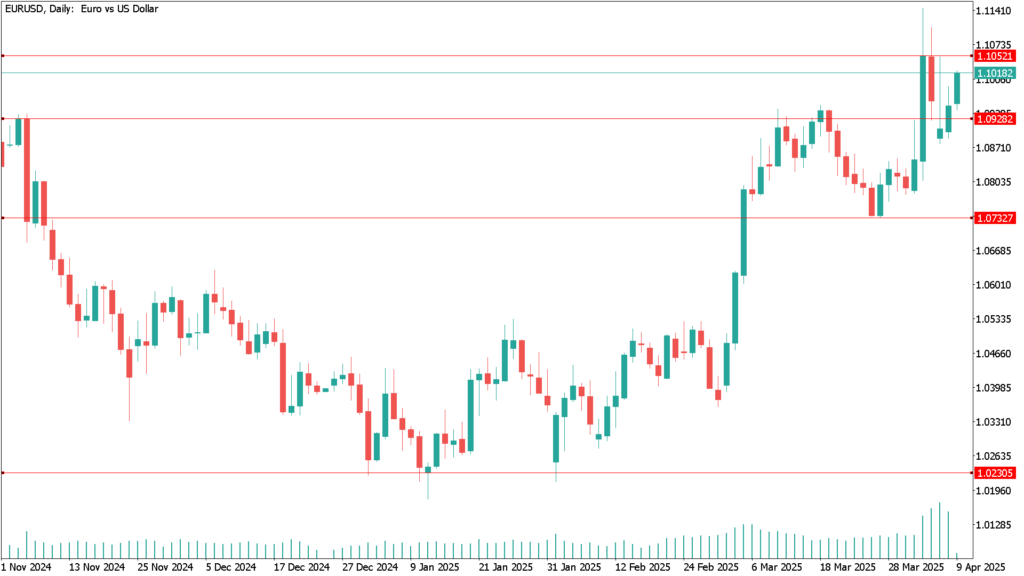EUR/USD saw a modest recovery on Tuesday, ending a two-day losing streak as traders locked in last-minute gains ahead of the Trump administration’s sweeping “reciprocal” tariffs, set to take effect on April 9. Meanwhile, growing market expectations of Federal Reserve rate cuts are clashing with policymakers’ caution, setting up a potential conflict between economic forecasts and monetary policy.
With a light European economic calendar this week, Tuesday offered a brief respite from the recent wave of geopolitical and trade tensions under the Trump administration. However, several Federal Reserve officials used the opportunity to warn that the uncertainty and inflationary pressures stemming from U.S. tariffs could complicate—rather than accelerate—the Fed’s path to rate cuts.
Rising Market Bets on Fed Rate Cuts
Despite these warnings, traders are increasingly convinced that the Fed may be forced to lower interest rates before the end of 2025 to counter the potential economic slowdown caused by tariffs. According to the CME FedWatch Tool, some market participants are now pricing in a possible 25-basis-point rate cut as early as May, though July remains the more likely scenario. Expectations are also building for a total reduction of at least 100 basis points by year-end.
- Fed’s Goolsbee: “Tariffs are having a larger impact than expected.”
- Fed’s Daly: “There’s a risk that inflation could pick up again.”
Key U.S. Data Releases This Week
Traders will be closely watching several crucial U.S. economic indicators, which will provide a final snapshot of inflation and consumer sentiment before tariffs take effect:
- Thursday: Consumer Price Index (CPI) inflation report
- Friday: Producer Price Index (PPI) inflation and University of Michigan Consumer Sentiment Index
EUR/USD Daily Technical Analysis for April 9th:
EUR/USD found near-term support around 1.0900 on Tuesday, but buying momentum remains weak. A slight increase in selling pressure could send the pair back toward the 200-day Exponential Moving Average (EMA), which sits just below 1.0700.
Despite the euro’s strong rebound in March, a key resistance zone between 1.1000 and 1.1100 continues to cap upside potential.




